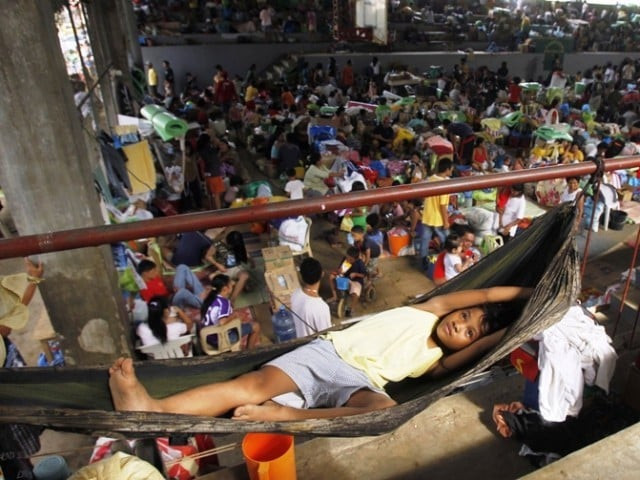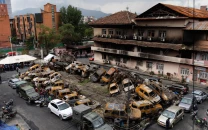Tent cities loom for Philippine flood victims
More than 60,000 people displaced by tropical storm Washi are currently sheltering in government buildings.

More than 60,000 people displaced by tropical storm Washi are sheltering in government buildings in Cagayan de Oro and Iligan cities, most of them in schools that reopen after the holidays, civil defence chief Benito Ramos said.
"We can't construct permanent shelters for them immediately. It will take some time. They have to move into tents when schools reopen on January 3," Ramos told AFP.
Floods unleashed by the storm obliterated entire riverside communities on the north coast of the main southern island of Mindanao before dawn on December 17, many of them populated by poor migrants living in shacks built on sandbars.
Manila does not normally build houses for those left homeless by natural disasters, but President Benigno Aquino has banned the victims from returning to flood-prone areas, stationing armed police to enforce the measure.
Social Welfare Secretary Corazon Soliman said Philippine Army engineering units were rushing to build temporary bunkhouses and latrines in Cagayan de Oro, which accounted for half the 1,236 officially confirmed deaths.
The same would be done in Iligan once the local government finds a suitable relocation area, she added.
"The target is to have transition shelters and bunkhouses in the first two weeks of January so families can feel some personal space that they can't get at evacuation centres," she told ABS-CBN television.
But she conceded the temporary buildings would be unlikely to be able to accommodate all the displaced, so others would have to stay in tents.
Ramos said finding a a permanent resettlement site in Iligan would not be easy, as the area was "mainly mountainous".
He said the national government had no definite timetable for building permanent shelters, but he expects them to be ready in six months.
Local officials have reported more than 1,000 people missing, a figure that Ramos, who also supervises the corpse retrieval operation by military units, considers possibly overstated.
Many of the dead remain unidentified and unclaimed at overflowing local mortuaries.
The focus of the search has shifted to the sea, where bloated bodies lie scattered in debris-strewn Iligan Bay as well as Macajalar Bay near Cagayan de Oro.
"The search is tapering off. The problem is there could still be bodies buried under the uncollected debris in the cities," Ramos said, adding the public works ministry was repairing shattered roads and bridges while military reservists had been called up to help clear away mud and other debris.
"There's no Christmas here. It's a sad spectacle," he said.



















COMMENTS
Comments are moderated and generally will be posted if they are on-topic and not abusive.
For more information, please see our Comments FAQ